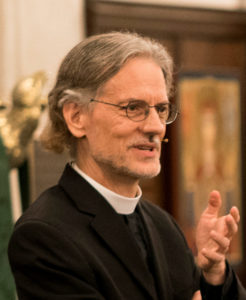Children Are Not the Future (They Are the Present)
“We need to take care of the children; after all, they are the future.” Lots of people say this—you may have said it yourself. It’s a common sentiment in the church, I’ve found. When talking about Sunday school or catechism (or whatever a particular church calls it), people will say religious education is important “because the children are our future.” School board elections and teachers similarly are said to be “important.” Why? Because we need to invest in our children. Why? Because they are the future.
This way of thinking about children is sentimental, and in the long run sentimentality is dangerous. Sentimentality about children turns our attention to where they are going, the possibilities that lie before them; it implicitly places the value of children in the future. And if children are the future, who are the present? Adults of course; we are the people who pay taxes and work and contribute to society. Adults: We are the present and therefore, we are the real people; people in the fullest sense.
But this is not true. Children are not the future. They are, right alongside all the rest of us, the present. With love grounded in reality, and without sentimentality, we should treat children not with a future good, but rather with a present good in mind. The point of Christian education is not to assure that churches will have a stream of adult members who can contribute money to keep the churches going! Sunday school and baptism and communion and confession—all of it—aim to turn children into lovers of God and friends of Jesus. In other words, into Christian people, right here and now. Likewise—although it is another sermon for another day—school education in general is distorted when the emphasis is entirely on future benefits. Learning to read, write, do math, acquire the tools of science, and all the rest: This helps children to become more fulfilled human beings right here and now.
***
In many ways technology has encouraged us to dehumanize one another, but that is not the whole story. An important, humane development of the past few decades has made it possible for us to see human beings before they reach the size where they can live outside the womb. This technological development is still working its way through our common human imagination. A newborn child used to be the smallest human we could see with our eyes, and thus, in our imagination when we wanted to picture a small human being, we pictured a baby weighing a few pounds. But the sonogram is changing that. The first picture most American parents now see of their child is when he or she weighs but an ounce or so. About a decade ago a young adult told me that “our little guy” was now “the size of my thumbnail.” Sonography, I believe, is having an indelible effect on our collective mindset. We are in the very early stages of forming a new collective understanding—and gut visualization—that human beings start very small.
And even those who are still too small for the sonogram to detect are there, hidden, but there, really there. They are not future fetuses, not future babies, not future children: They are already human beings, at the start of a journey.
When they die before birth, as some do naturally and others through outside intervention, it is not unreasonable to wonder: Were their lives worthless? Here, we are on the threshold of mystery. I cannot pretend to know the meaning of a life that never drew breath. But I do not think such lives are devoid of meaning—just as I do not think a child who dies at age two, or twelve, has had a meaningless life.
* * * *
There is a task before us today, and that is to understand that all human life has worth and deserves our appreciation regardless of its stage along the way. Even those of us who are pro-life need to admit that our imaginations are as yet imperfectly formed. Just as a ten-year-old child is not a future human but someone who commands our respect right now, so the little fellow whose father recognized him as being the size of his thumbnail . . . so the sibling who dies at birth . . . so for any of us: We are all part of the human world of today. For all of us, our value, our dignity, our reality is right here, present.










